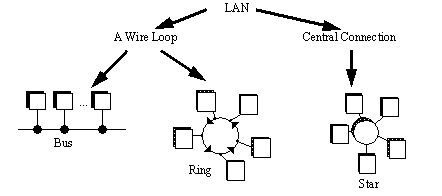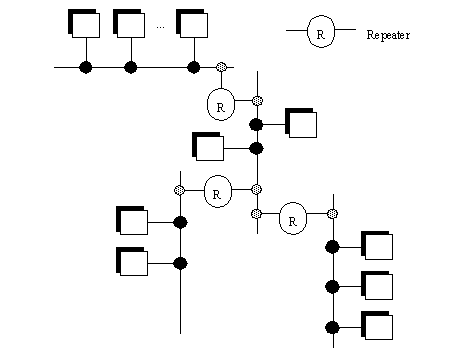TOPOLOGYThe structure of a network is called the topology. Figure 27.1 Network Topologies shows the basic network topologies. The Bus and Ring topologies both share the same network wire. In the Star configuration each computer has a single wire that connects it to a central hub. 
Figure 27.1 Network Topologies In the Ring and Bus topologies the network control is distributed between all of the computers on the network. The wiring only uses a single loop or run of wire. But, because there is only one wire, the network will slow down significantly as traffic increases. This also requires more sophisticated network interfaces that can determine when a computer is allowed to transmit messages. It is also possible for a problem on the network wires to halt the entire network. The Star topology requires more wire overall to connect each computer to an intelligent hub. But, the network interfaces in the computer become simpler, and the network becomes more reliable. Another term commonly used is that it is deterministic, this means that performance can be predicted. This can be important in critical applications. For a factory environment the bus topology is popular. The large number of wires required for a star configuration can be expensive and confusing. The loop of wire required for a ring topology is also difficult to connect, and it can lead to ground loop problems. Figure 27.1 The Tree Topology shows a tree topology that is constructed out of smaller bus networks. Repeaters are used to boost the signal strength and allow the network to be larger. 
|